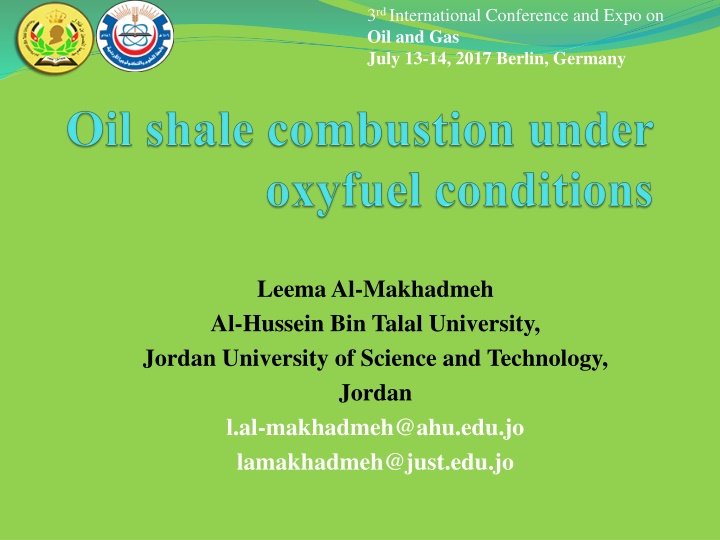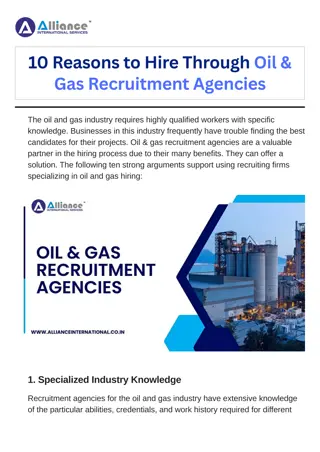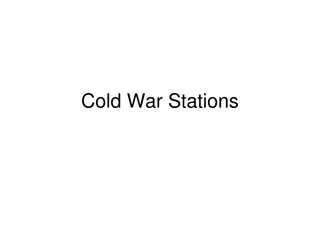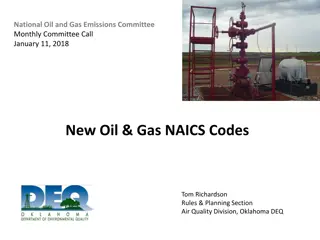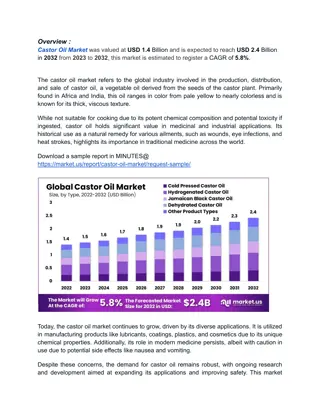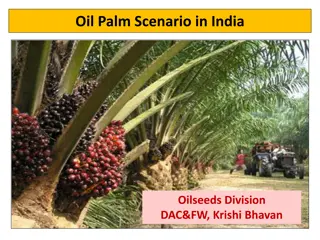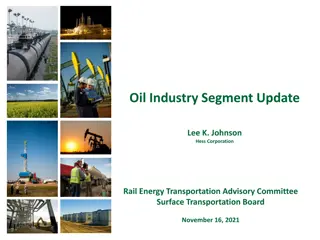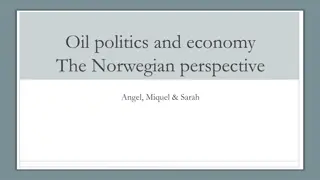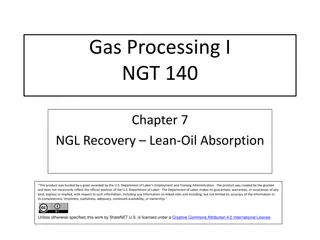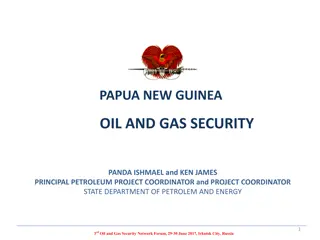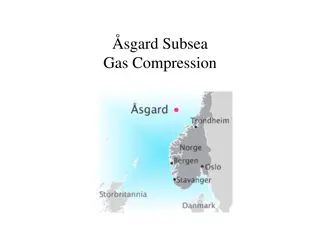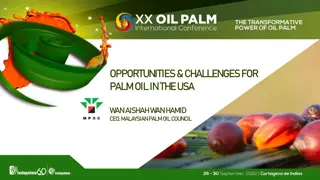3rd International Conference and Expo on Oil and Gas in Berlin
Jordan, a non-oil producing country, faces energy challenges and explores oil shale combustion under oxyfuel conditions. Detailed analysis, experimental results, and discussions are presented from the study conducted at Al-Hussein Bin Talal University and Jordan University of Science and Technology.
Download Presentation

Please find below an Image/Link to download the presentation.
The content on the website is provided AS IS for your information and personal use only. It may not be sold, licensed, or shared on other websites without obtaining consent from the author.If you encounter any issues during the download, it is possible that the publisher has removed the file from their server.
You are allowed to download the files provided on this website for personal or commercial use, subject to the condition that they are used lawfully. All files are the property of their respective owners.
The content on the website is provided AS IS for your information and personal use only. It may not be sold, licensed, or shared on other websites without obtaining consent from the author.
E N D
Presentation Transcript
3rd International Conference and Expo on Oil and Gas July 13-14, 2017 Berlin, Germany LeemaAl-Makhadmeh Al-Hussein Bin Talal University, Jordan University of Science and Technology, Jordan l.al-makhadmeh@ahu.edu.jo lamakhadmeh@just.edu.jo
Presentation Outline Introduction Oxyfuel Combustion Experimental Part Results and Discussion Conclusions 2/20/2025 2
Introduction Jordan is a non-oil producing country and is largely affected by the world energy situation; it has a clear plan for oil-shale utilizations. Oil-shale resources in Jordan are estimated to be 40 billion tons, in which the oil is about 4 billion tons. Oil shale utilization in Jordan and elsewhere faces many obstacles that affect its utilization. Oil shale combustion under oxyfuel conditions was investigated in this study in a trial to solve some of the challenges that faces Jordanian oil shale combustion. 2/20/2025 3
Oxyfuel Combustion Oxyfuel combustion, a combination of oxygen, with a purity of more than 95%, and recycled flue gas is used for combustion of the fuel. Recirculated flue gas N2 O2 CO2 CO2 storage air ASU recovery Boiler Fuel CO2, H2O, H2O 2/20/2025 4
Experimental Part El-Lajjun oil-shale from south of Jordan was used in this study. The following table shows the detailed analysis of oil shale . Oil shale combustion was performed in a vertical 20- kW furnace (see the following Fig). Both unstaged and staged combustion experiments were performed in air and OF27 condition. The wall temperature during all the combustion experiments was 1200 C. 2/20/2025 5
El-Lajjun oil-shale analysis Proximate Analysis Water (ar, %) 1.08 Ash (wf, %)2 54.20 Volatile (waf, %)3 99.06 Fixed carbon (waf, %) 0.85 Ultimate Analysis 1: as received 2: water free 3: water ash free 4: by difference 5 Di: represent that i% by volume of the particles that have a diameter equal to or less than Di. C (waf, %) 55.68 H (waf, %) 4.27 N (waf, %) 0.87 S (waf, %) 8.30 O (diff, %)5 30.88 LHV (waf, kJ/kg) 19585.15 D90 ( m) 35.3 2/20/2025 6
A once-through vertical 20 kW furnace 2/20/2025 7
Results and Discussion Oil shale behavior during unstaged combustion NO air-firing SO2 air-firing NO OF27 SO2 OF27 O2 air-firing CO air-firing O2 OF27 CO OF27 800 9000 30 1.6 8000 700 1.4 25 7000 600 1.2 SO2, ppm 6000 CO, vol% 20 500 1 NO, ppm O2, vol% 5000 400 15 0.8 4000 0.6 300 10 3000 0.4 200 2000 5 0.2 100 1000 0 0 0 0 0 0.5 1 1.5 2 2.5 0 0.5 1 1.5 2 2.5 distance from burner, m distance from burner, m Axial concentration profiles of oxygen, carbon monoxide, nitrogen oxide and sulphur dioxide for air-firing and OF27 combustion (excess O2 = 3%, T = 1200 C). 2/20/2025 8
Oil shale emission during unstaged combustion NO emission Conversion, % SO2 emission Conversion, % 600 100 8000 100 6762 Oil shale-N conversion to NO, % Oil shale-S conversion to SO2, % 433 7000 500 80 NO emission, mg/MJ 80 SO2 emission, mg/MJ 6000 4933 400 5000 60 60 69 237 300 4000 40 49 40 27 3000 200 15 2000 20 20 100 1000 0 0 0 0 air-firing OF27 air-firing OF27 NO and SO2 emissions and their conversions during air-firing and OF27 combustion at the exit of the reactor for El-Lajjun oil shale combustion. 2/20/2025 9
Oil shale behavior during staged combustion NO O2 CO 400 25 350 25 350 300 20 20 300 250 O2 and CO, vol% O2 and CO, % 250 15 15 NO, ppm NO, ppm 200 200 150 10 10 150 100 100 5 5 50 50 0 0 0 0 0 0.5 1 1.5 2 2.5 0 0.5 1 1.5 2 2.5 distance from burner, m distance from burner, m Air-firing OF27 combustion Axial concentration profiles of O2, CO, and NO for staged air-firing and OF27 combustion ( =0.75, T = 1200 C, 2 m far from the burner). 2/20/2025 10
Reduction of NO emissions using staged combustion NO emission Oil shale-N conversion to NO 450 30 450 30 27.34% Air-firing Oil shale-N conversion to NO, % Oil shale-N conversion to NO, % OF27 combustion 400 400 25 25 350 350 NO emission mg/MJ NO emission mg/MJ 300 20 300 20 14.67% 250 250 15 15 200 7.46% 200 150 10 150 10 6.61% 3.90% 100 4.24% 100 2.86% 3.31% 5 5 50 50 0 0 0 0 0.75 0.85 0.95 1.19 0.75 0.85 0.95 1.15 burner oxygen ratio, burner oxygen ratio, NO emissions and Oilshale-N conversion over burner oxygen ratio under air-firing and OF27 combustion. 2/20/2025 11
Reduction of simulated recycled NO during undstaged and staged combustion NO-injected NO-measured Reduction of simulated recycled NO 1400 100 Reduction of simulated recycled NO, % 64% 1200 57% 1067 80 62% 65% 59% 1000 909 821 820 723 60 NO, ppm 800 711 649 622 601 600 40 432 451 400 20 200 0 0 Unstaged OF27-3% 800 99% 99% 99% Reduction of simulated recycled NO, % 99% 700 100 600 702 80 498 500 60 NO, ppm 400 311 300 40 136 200 147 145 139 138 134 20 100 0 0 Staged OF27- =0.75, t3s 2/20/2025 12
In-furnace limestone addition during unstaged combustion SO2 Desulphurization efficiency 7000 100 7000 100 6279 80.28% Desulphurization efficiency, % 99.68% 6000 6000 Desulphurization efficiency, % 95.28% 80 80 5136 SO2 emission, mg/MJ SO2 emission, mg/MJ 5000 88.35% 5000 43.85% 48.51% 60 60 4000 4000 3000 3000 40 40 3526 2000 2000 2645 1238 20 20 1000 598 1000 297 16 0 0 0 0 0 1 2 3 0 1 2 3 Ca/S molar ratio Ca/S molar ratio Air-firing OF27 combustion SO2 emissions and the efficiency of desulphurization during unstaged air-firing and OF27 combustion (Ca/S ratios=1, 2, and 3) 2/20/2025 13
In-furnace limestone addition during unstaged combustion 7000 6279 6000 5136 SO2 emission, mg/MJ 5000 4300 3859 3525 4000 3550 3103 air OF27 2643 3000 2000 1238 598 1000 0 0.75 0.85 0.95 unstaged 1 unstaged 2 Burner oxgen ratio, Fig. 3. SO2 emission during unstaged and staged air-firing and OF27 combustion, limestone molar ratio is Ca/S=2 for staged combustion and for unstaged1, unstaged2 without limestone addition. Position of staged probe is 2 m from the burner. 2/20/2025 14
Conclusions During OF27 combustion, the CO concentration in the burner section is much higher than air-firing due to the gasification reactions in a CO2-rich medium. Even though, there is almost no problem for CO controlling for OF27 combustion as well as air-firing. Oxidant staging was used efficiently for NO reduction from oil shale combustion in both modes. Oil-shale N conversion to NO at the exit of the furnace during unstaged mode and with oxygen burner ratio of 0.95 is lower for OF27 combustion compared to air-firing. 2/20/2025 15
During unstaged and staged air-firing and OF27 combustion, the simulated recycled NO is efficiently reduced. The simulated recycled NO reduction is more efficient during staged OF27 combustion than unstaged case. El-Lajjun oil shale- S conversion rates to SO2 is 69% and 49% for air-firing and OF27 combustion, respectively. By using direct in furnace limestone injection, SO2 emission was reduced significantly in both unstaged and staged OF27 and air-firing as well. 2/20/2025 16
The desulfurization efficiency was affected by the oxidant-stage level, Ca/S molar ratio and position of the secondary oxidant. The combustion in staged air-firing and in staged OF27 combustion ranged from 32 to 61% and from 25 to 60%, respectively. desulfurization efficiency for oil shale The desulfurization efficiency during unstaged combustion was much higher than that during staged combustion. 2/20/2025 17
3rd International Conference and Expo on Oil and Gas July 13-14, 2017 Berlin, Germany Thank you 2/20/2025 18
